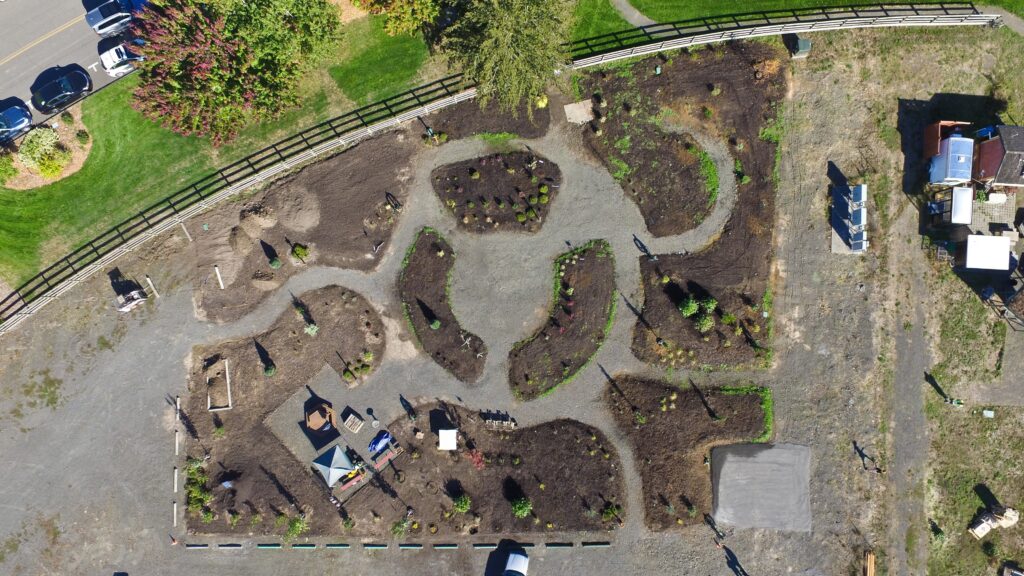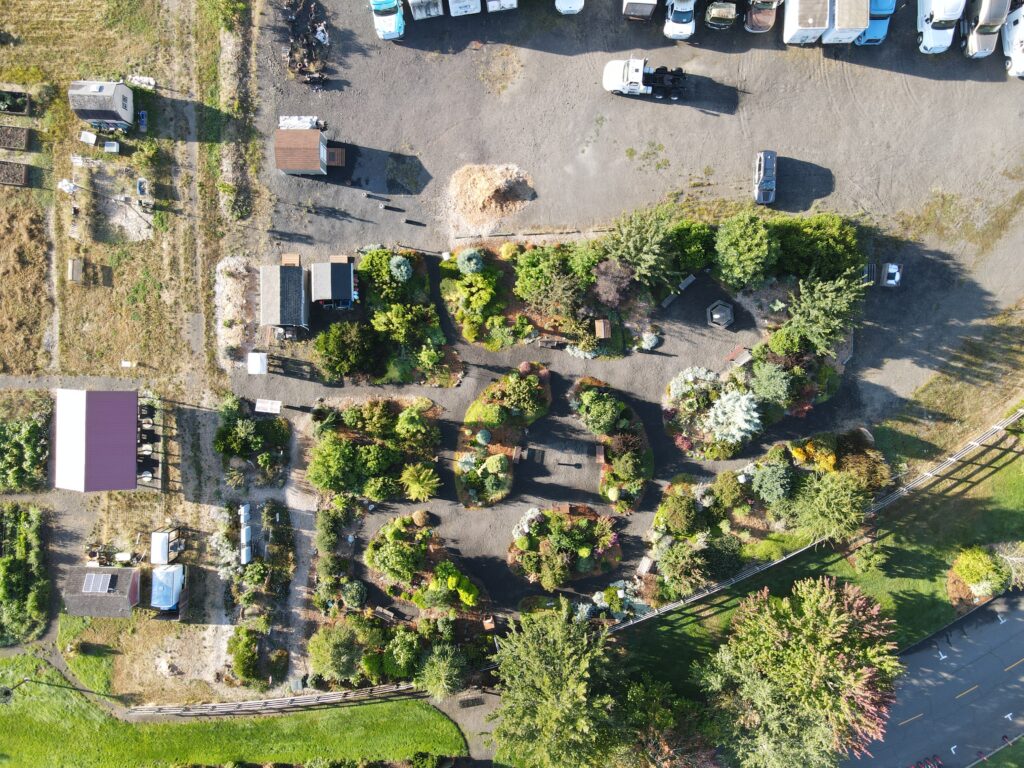A conversation with the Washington County Master Gardener Association Education Garden Team
From gravel to garden—that’s the story of our Education Garden at Portland Community College Rock Creek. This 17,000-square-foot space used to be a compacted parking lot covered in gravel and riprap. Nothing but weeds could grow here. It radiated heat and offered virtually no support for plants, wildlife, or the soil organisms that make up a healthy ecosystem. But we saw an opportunity to reclaim the space and transform it into a thriving outdoor classroom that teaches sustainable gardening practices. And that’s exactly what we did.
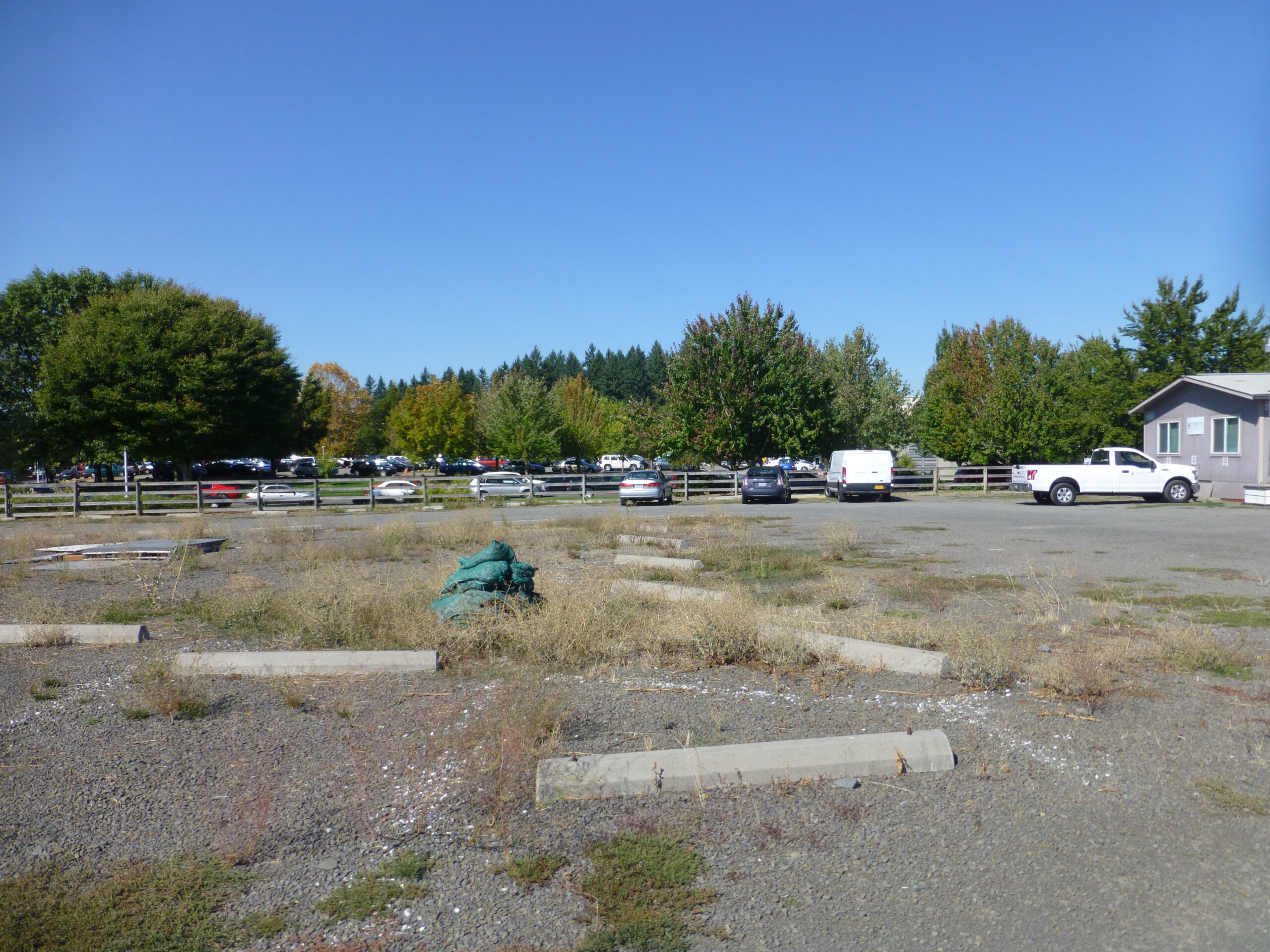

Designing with Resilience in Mind
From the beginning, our goal was to create a space where people could learn. We organized the garden into themed sections—what we call “Garden Classrooms”—each one focused on a specific concept. These include:
- Waterwise Garden
- PNW Meadowscape
- Hellstrip beds (with native and non-native comparisons)
- Moon Moth Garden
- Pollinator Habitat Garden
- Fragrance Garden
- Community Circle with small conifers and companion plants
- PNW Pollinator Hedgerow
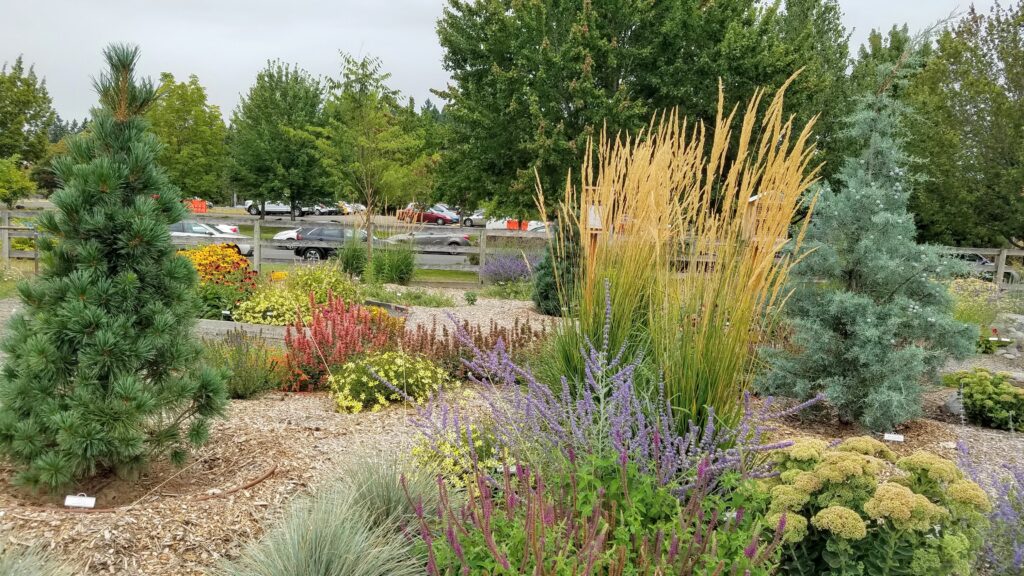
We also feature habitat elements like mason bee stations, ground-nesting bee zones, and signage for the DarkSky Oregon Citizen Scientist Project. Everything we’ve done is meant to demonstrate how gardens can be beautiful, functional, and climate-resilient.
Facing Climate Challenges
Because the site had been a gravel parking lot, there was no usable soil. After removing the gravel, we brought in 40 truckloads of topsoil and 150 cubic yards of compost. We tested the soil, amended it, and covered it with arborist chips after planting. We haven’t needed additional soil amendments since—just mulch and good care.
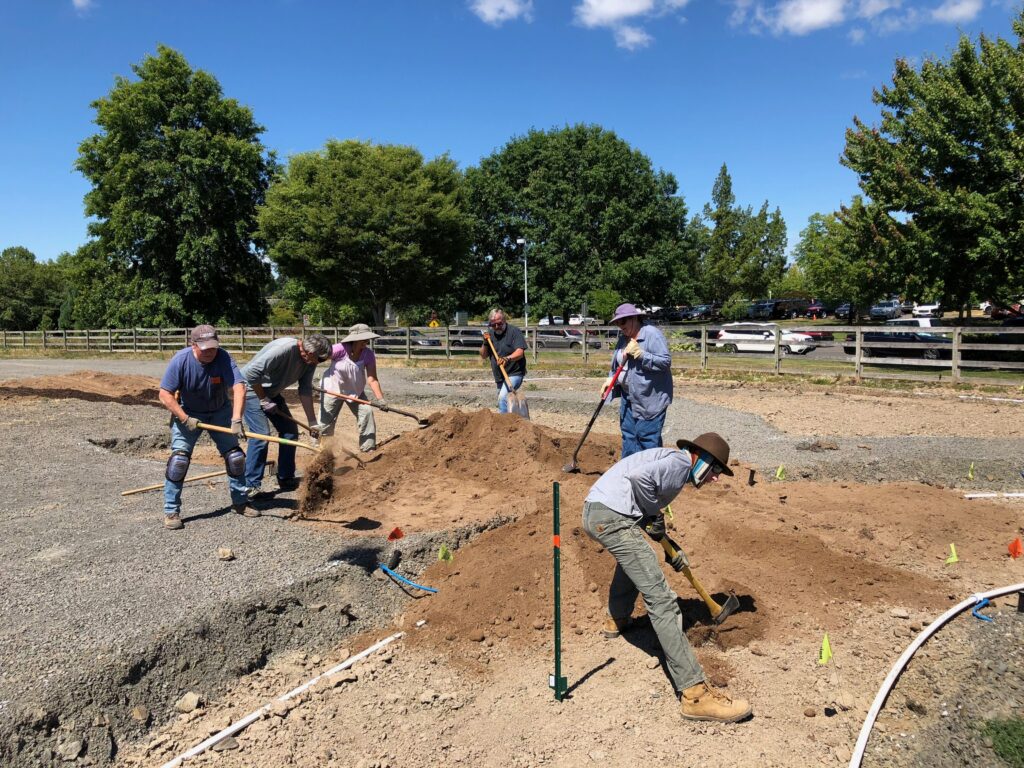
Water was another major concern. With little initial shade and increasing summer heat, we installed drip and overhead irrigation and grouped plants by water needs. We monitor the health of our plants regularly and adjust irrigation based on what we observe, including probing soil for infiltration.
Drainage remains an issue. The compacted subgrade is still there, so we avoid planting large trees that require deep soil. When we planted trees early on, we used an auger to break through the hard layer and give roots a path through the compacted subgrade.
The site also had very little wind protection. Over time, we’ve used shrubs and trees to create a buffer and soften the wind, especially along the garden’s edge, during summer drying events but also in winter storm events by shielding plants from freezing high winds from the east.
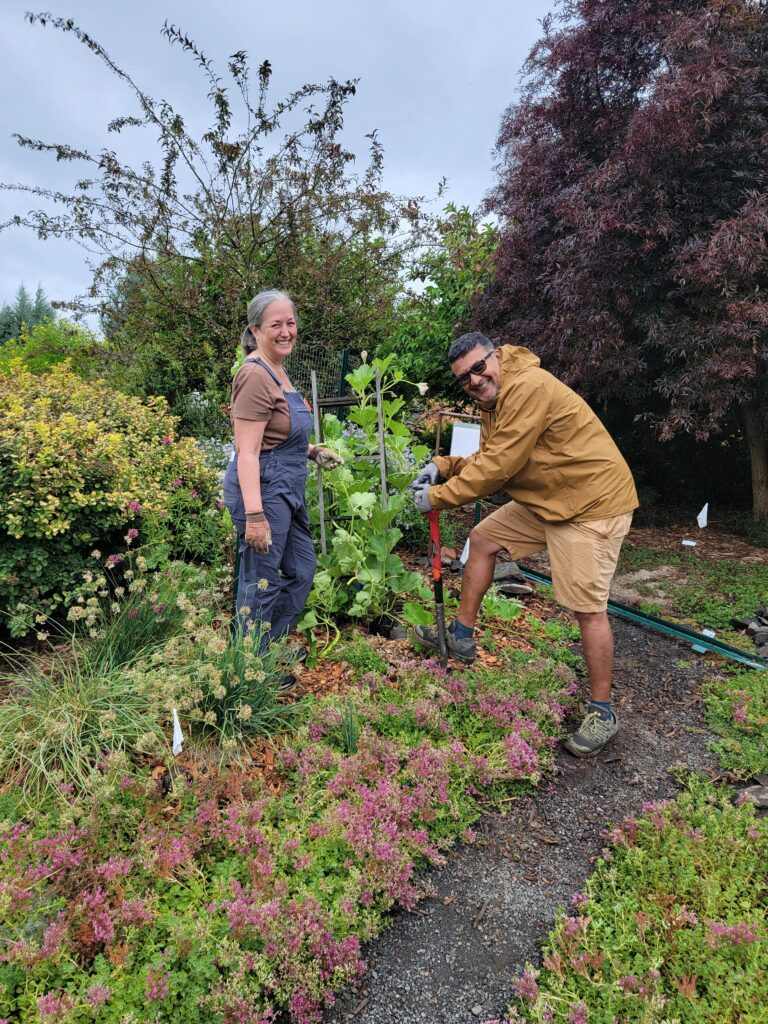
Choosing the Right Plants
We’ve always prioritized plants that are low-water, low-maintenance, affordable, and available to home gardeners. The garden is a balance of perennials and evergreens to provide both structure and year-round habitat for insects and other wildlife.
Our goal is to build a resilient, adaptable ecosystem. When plants die, we try to determine why the plant failed before replacing it, with the goal of creating a garden that, over time, is increasingly composed of plants adapted to the specific conditions of the site.
Native plants were an integral theme of the original garden design, a theme we have continued to expand on with the installation of a PNW Pollinator Hedgerow in 2020 (and its extension in 2022) and a PNW Meadowscape in 2023. In 2024, we converted a section of our Hellstrip into a native-only test zone.
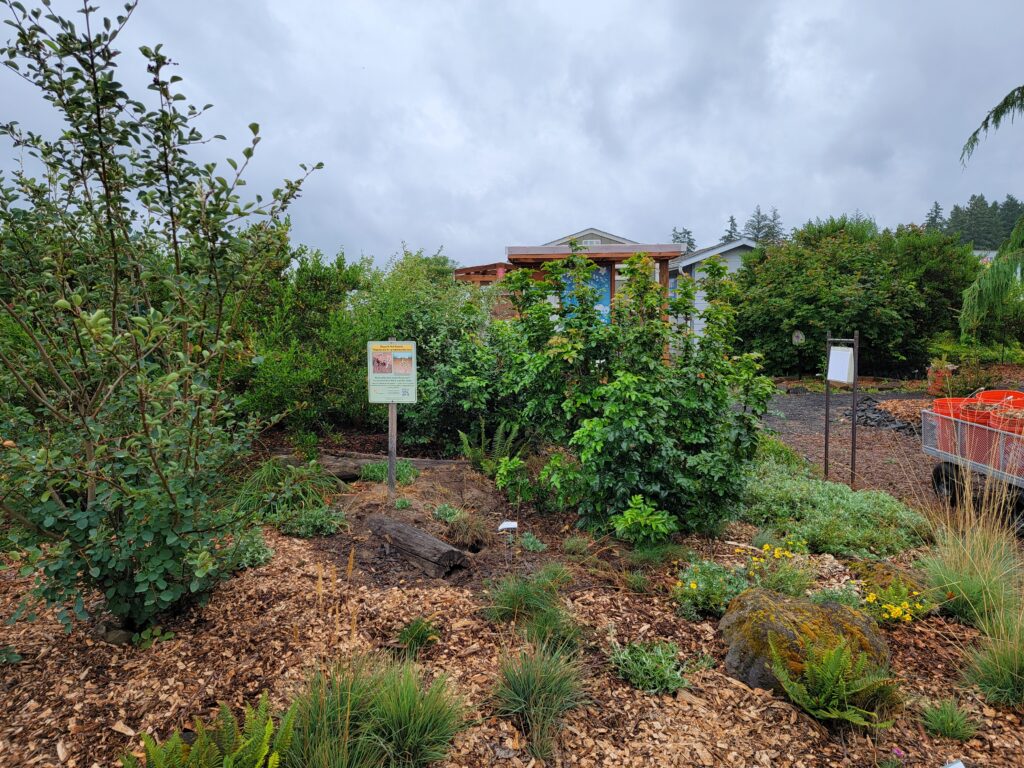
We’ve learned from experience that some plants—like goldenrod, woodland strawberry, and Douglas aster—can be too aggressive in our managed garden. They’re great in the wild, but here we aim for diversity without constant intervention.
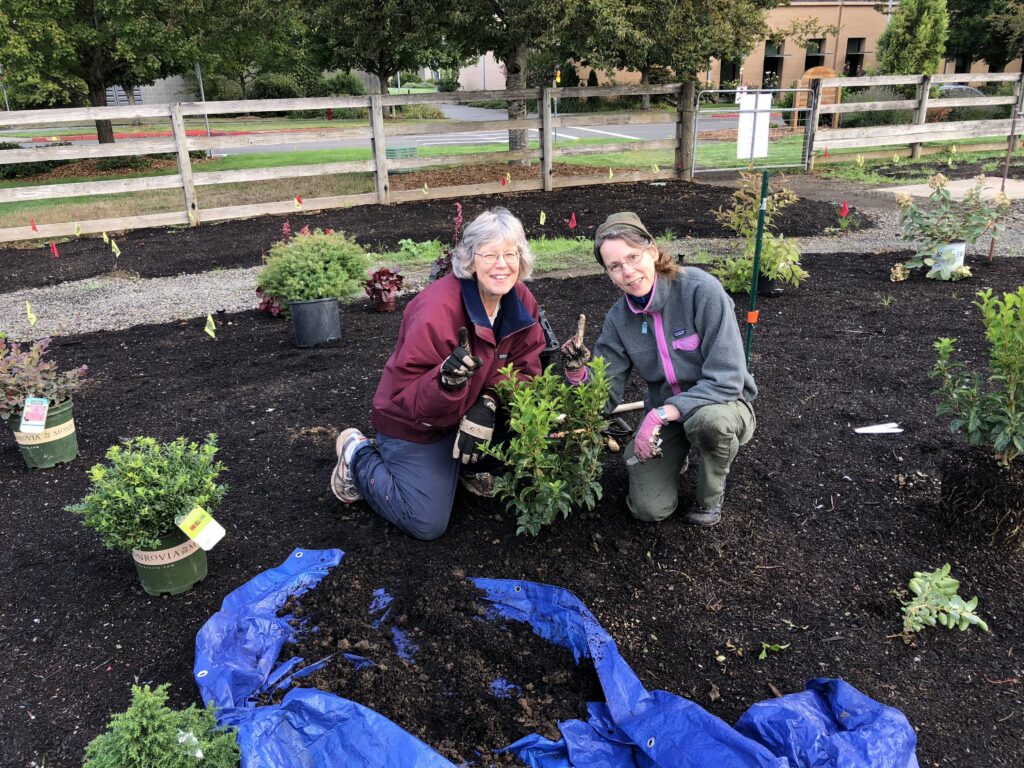
Techniques That Make a Difference
- Adjusting irrigation for maturing plants
- Leaving leaves and small branch piles to support overwintering insects
- Creating intentional habitat spaces, like our Moon Moth Garden
- Avoiding all chemical inputs
- Using arborist chips for weed suppression, moisture retention, and soil health
We started with organic compost to support soil life and have since let the garden build healthy soil naturally.
What’s Next?
We’re continuing to adapt. We plan to convert more overhead irrigation to drip, fine-tune watering in key areas, and explore new plant choices—especially native species—when replacements are needed. We’re also evaluating plants that have outgrown their space to decide whether to relocate or remove them.
Sharing What We Learn
Our garden is a living classroom. We host public classes as part of our In the Garden Series, offer hands-on Master Gardener workshops, and partner with PCC’s Landscape Technology program for curriculum-based learning. Educational signage helps visitors learn even when we’re not there.
We’re excited to integrate Garden Future activities into our outreach this year. We plan to display laminated Garden Future posters in the garden and hand out quarter-sheet cards with links to the website and resources. It’s a natural fit—we’re already focused on sustainability, and Garden Future gives us another way to talk about climate resilience.

Our Advice to Other Gardeners
Take time to plan. Know your goals. Observe your garden’s microclimates and be realistic about your time and energy. When in doubt, rely on trusted sources—your local Master Gardener Program, the Garden Future website, the Backyard Habitat Certification Program, and the Xerces Society are all great places to start.
And always remember right plant, right place, right care.
Take a video tour of the garden at our YouTube channel.
Explore one of Oregon’s 50+ Master Gardener Demonstration Gardens—realistic, regionally adapted spaces that showcase what thrives in your local conditions. Find a demonstration garden near you.
This story is part of Garden Future, an OSU Extension Master Gardener outreach project dedicated to conversations and action for gardening in a changing climate.
What are you seeing in your garden? What changes are you making? We invite you to join the Garden Future conversation by answering three quick questions. At the end, you’ll have the option to sign up for our Garden Future newsletter and stay connected with stories, resources, and tools to support climate-resilient gardening in your community.


